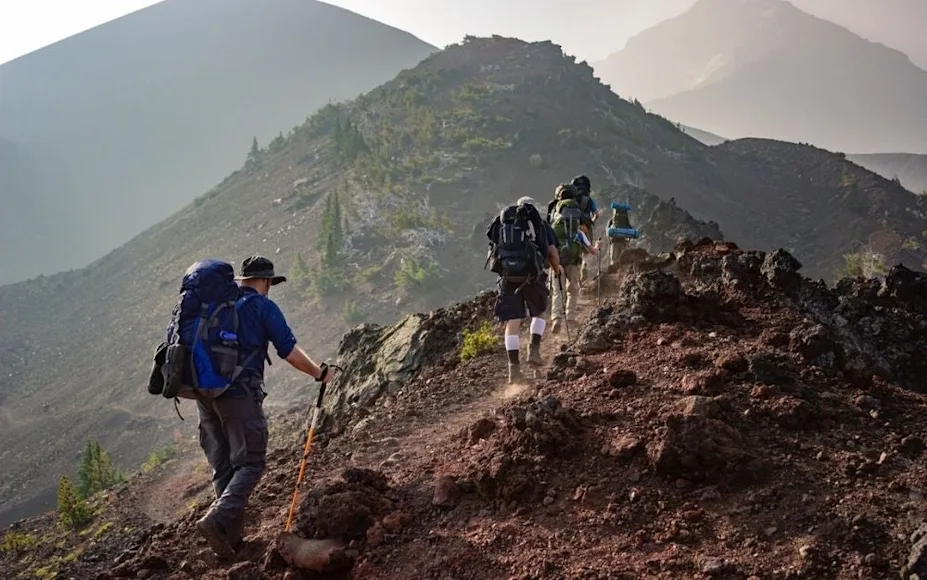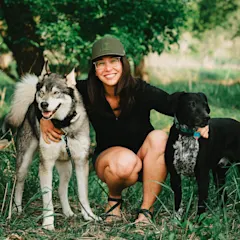_We may earn revenue from the products available on this page and participate in affiliate programs. Learn more ›
_
Best Lightweight

Osprey Daylite Daypack
LEARN MORE
Summary
All the support and storage you need for a hike with an extremely thoughtful, compact design.
Best for Men
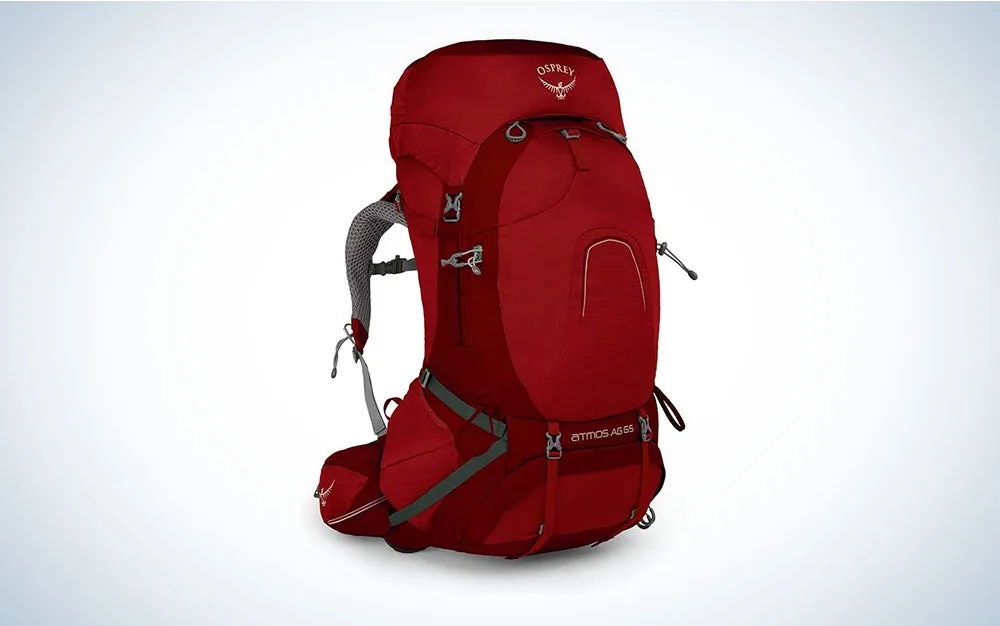
Osprey Men’s Atmos AG 65
LEARN MORE
Summary
Endless adjustments and options allow for a truly perfect fit with no unnecessary bulk.
Best for Women

Osprey Women’s Aura AG 50
LEARN MORE
Summary
It has an adjustable harness and hip belt, and is designed to reduce felt weight.
Hiking gear means much more than solid hiking boots and merino wool socks, and finding the best hiking backpack for your outdoor style will instantly, and continually, improve your time and experience outdoors. Weight and waterproofing matter, but the differentiating factors in backpacking backpacks are design, support, straps, and fit.
Best Daypack: Gregory Miwok 18L Daypack
Best for Men: Osprey Men’s Atmos AG 65
Best for Women: Osprey Women’s Aura AG 50
Best Lightweight: Osprey Daylite Daypack
Best Baby Pack: Osprey Poco Child Carrier
Best Dog Pack: K9 Sport Sack Rover 2
Best Budget: Venture Pal 40L Lightweight Hiking Backpack
How We Picked The Best Hiking Backpacks
The best hiking backpacks were chosen based on user experience by the writer, along with industry knowledge of products and popularity among consumers. When writers cannot individually test a product, they consult colleagues and friends who may have used the product to get a verified review. Beyond that, things like company-specific research, customer satisfaction, and knowledge of industry standards are also considered. Products are subject to change or are updated as more of the best backpacks
are tested and reviewed. Check back for more updates and in-depth testimonials.
The Best Hiking Backpacks: Reviews and Recommendations
Best Daypack: Gregory Miwok 18L Daypack
Best Daypack
Superb Comfort and Convenience
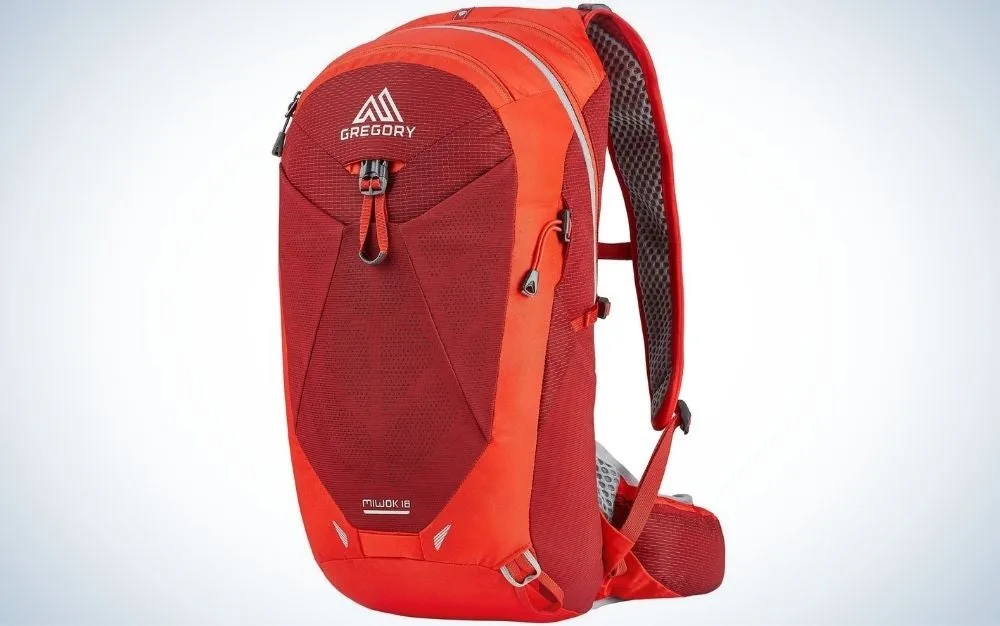
Specs
Materials: Nylon
Capacity: 18L
Weight: 1.7 lbs
Pros
Compatible with a 3L hydration reservoir
Good ventilation on the back panel
Ideal size for short or long day hikes
Lightweight yet durable materials
Cons
Too small for overnights
No integrated rain cover
Gregory packs are highly regarded, and the 18-liter size daypack
is a great size for most day hikes—not too small, and not too large. An ATS suspension system plus the foam back panel and shoulder straps make this hiking backpack a dream to carry, and the breathable paneling everything the pack touches your body — including the cushioned hip straps — only add to that comfort (ditto the sternum and compression straps), while gear compartments and attachments for sunglasses, a hydration reservoir, bike light, helmet, trekking pole, and more make it super versatile.
Best for Men: Osprey Men’s Atmos AG 65
Best for Men

Specs
Materials: Nylon
Capacity: 65L
Weight: 4.56 lbs
Pros
Comfortable anti-gravity suspension
Easy access water bottle holders
3L water reservoir sleeve
Osprey lifetime warranty and repair policy
Great for backpacking no matter the season
Cons
Not everyone likes the feel of the anti-gravity suspension we recommend trying this pack on in person
The Osprey pack has an anti-gravity suspension system with a breathable mesh panel that actually holds the pack slightly up and away from the back for an ultralight carrying experience with no unnecessary drag. It has abundant, adjustable, and often removable gear attachments and compartments, so you can get a customized, streamlined pack, with easy-adjusting hip and sternum straps for just as custom of a fit. The recommended load range is 30 to 50 pounds.
Best for Women: **Osprey Women’s Aura AG 50
**
Best for Women

Specs
Materials: Nylon
Capacity: 50L
Weight: 4.1 lbs
Pros
Load range of 25-40 lbs
Adjustable harness and hip belt
Removable lid
Excellent organization
Cons
May be smaller than some women want for longer trips
Back may still be too tall for women with short torsos
Like the men’s Osprey Atmos, the Osprey Women’s Aura AG 50 can be adjusted to provide the perfect fit, along with plenty of gear pockets and attachments. It is designed to carry from 25 to 40 pounds of gear and has many of the classic Osprey backpacking pack features. We went with a slightly smaller size for the women’s pack to better match the recommended weight-carrying ratio to body size. Some women may prefer a larger pack for longer excursions, or they may not like the feel of the anti-gravity suspension. If that’s the case, we recommend a similar size pack of the Gregory brand.
Best Lightweight: Osprey Daylite Daypack
Best Lightweight
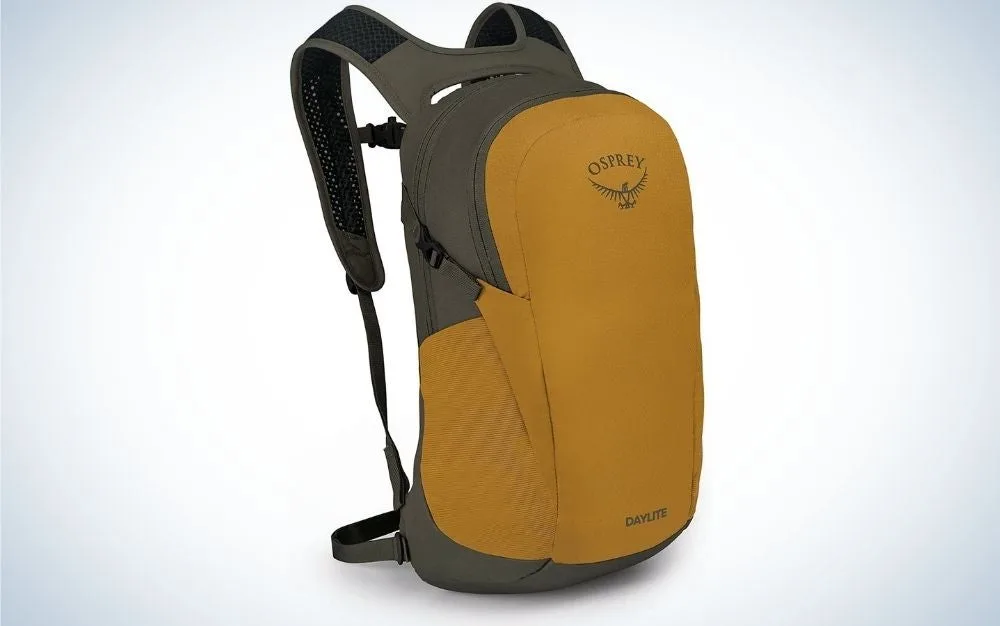
Specs
Materials: Nylon
Capacity: 13L
Weight: 1 lb
Pros
Available in several colors and designs
Convenient storage and organization options
Lightweight for the carrying capacity
Great size for day hikes
Cons
Straps and hip belt are not well padded
This hiking bag has 13 liters of storage space, and holds a hydration reservoir and two water bottles. The shoulder strap structure keeps stress out of your neck, while side compression and sternum straps hug the pack to you so you can move more naturally and without weighing down your spine.
Best Baby Pack: Osprey Poco Child Carrier
Best Baby Pack
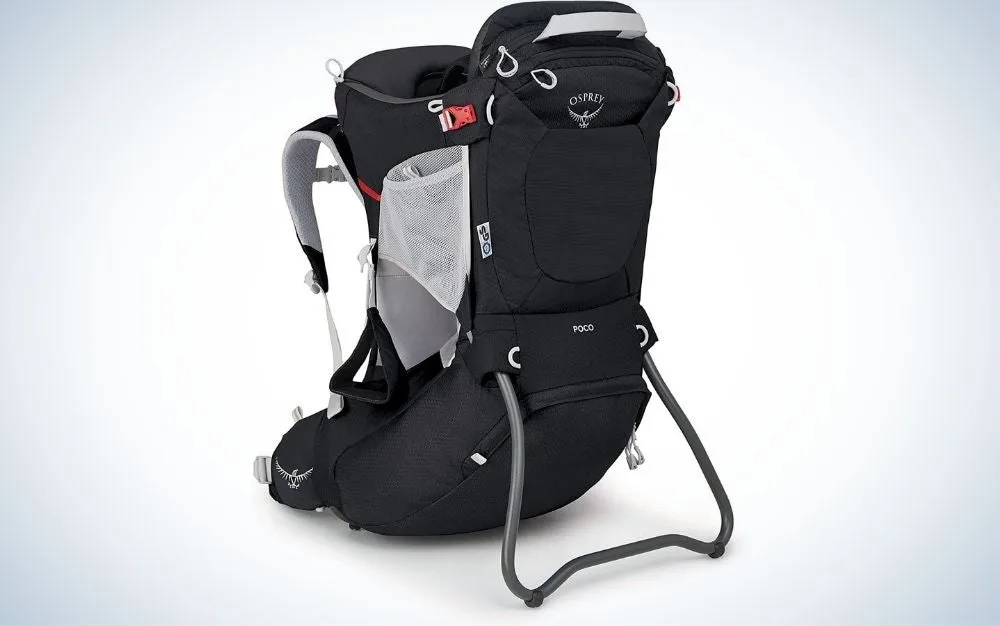
Specs
Materials: Nylon
Min Weight Rec: 16 lbs
Max Weight Rec: 48.5 lbs
Pros
Built-in UPF 50+ UV sunshade
Adjustable and removable foot stirrups
Easy to clean
Ample storage for adult and baby needs while hiking
Good weight distribution
Cons
May become uncomfortable as you reach the max weight recommendation
With a built-in UPF 50+ sun shield, removable foot stirrups, and the ability to carry up to 48.5 lbs, this kid-carrying hiking backpack — with a kickstand-like frame to balanced ground placement — will get you and your offspring on the trails early, often, and with peace of mind coming from a highly reputable backpack brand like Osprey.
Best Dog Pack: K9 Sport Sack Rover 2
Best Dog Pack
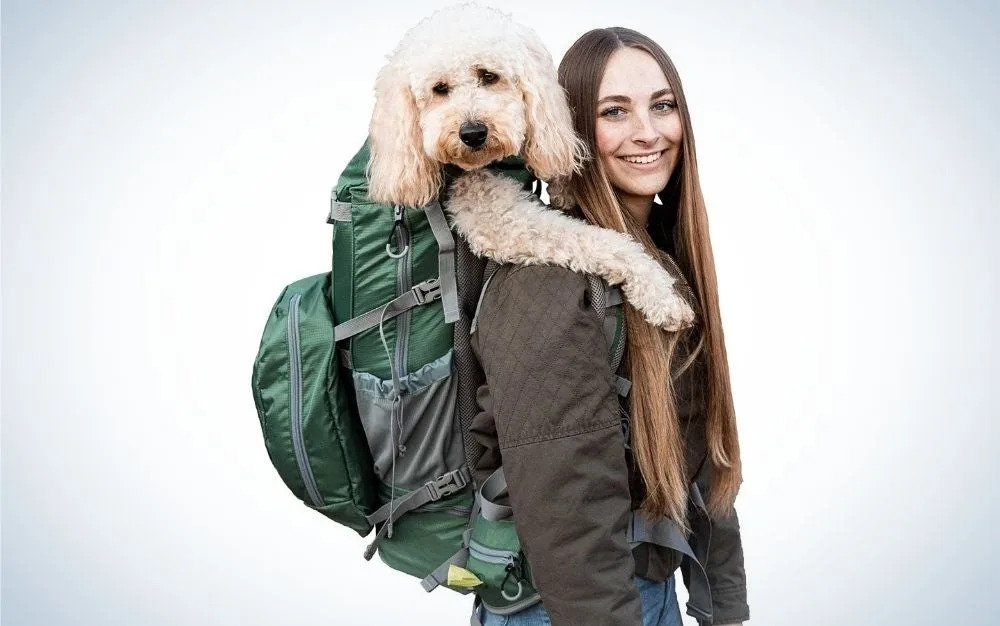
Specs
Pack Capacity: 50-60L
Weight Capacity: 80 lbs
Product Weight: 4.5 lbs
Pros
Can be used as a backpacking pack or dog carrier
Fits most dogs up to 80 lbs
Available in other sizes
Great for hiking and commuting
Cons
Not all dogs will enjoy being confined in the pack
The body type of the dog is very dependent on how well they fit inside the pack
If your dog is skittish or aging—or if you need to take the pooch on some form of transit that doesn’t allow uncontained dogs (including your friend’s new car), K9 Sport Sack makes extremely well designed hiking backpacks for carrying dogs, with a particular eye to safety — consider the collar carabiner, adjustable side straps and mesh panels, leg holes, etc. And once your dog is out and walking, it wears like a normal backpack and can contain your gear.
Best Budget: Venture Pal 40L Lightweight Hiking Backpack
Best Budget
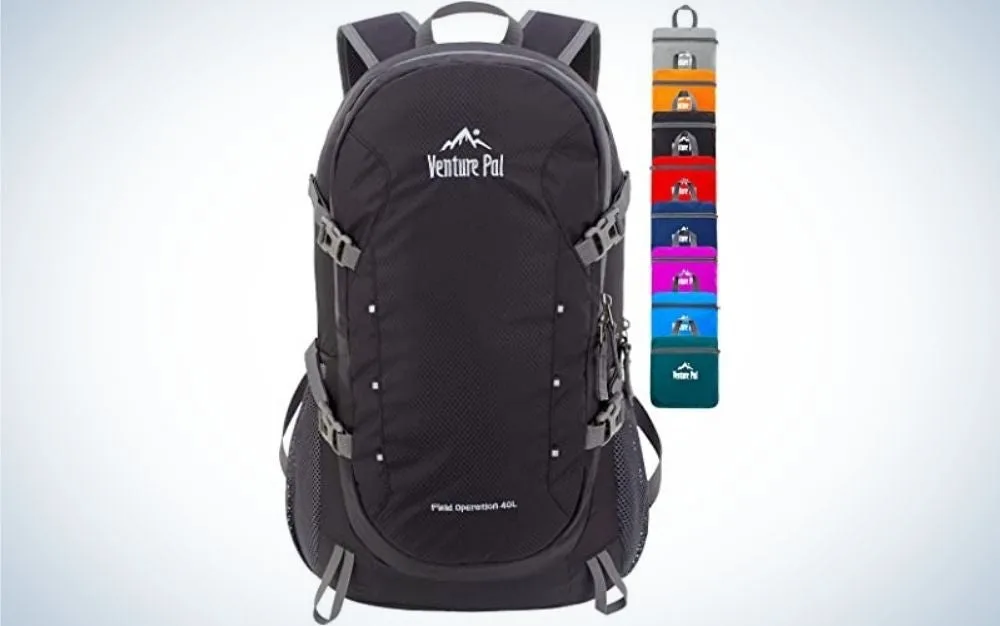
Specs
Materials: Nylon
Capacity: 40L
Weight: 0.7 lbs
Pros
Lightweight
Compact for travel
Affordable price
Integrated wet pocket
Cons
Not the most durable or comfortable pack option
At 40L, this budget Venture Pal hiking backpack is not wanting for capacity. Side compression straps can rein it in for smaller hauls, and various interior pockets (including one to store separate wet goods) keep things organized. There’s no hip strap, so you’ll want to keep things light to avoid pressure on your neck, shoulders, and spine.
What to Consider When Choosing the Best Hiking Backpack
Hiking backpacks are not one-size-fits-all. Prioritize fit with your hiking backpack as much as you would with your hiking boots. It should be easily adjustable so it will be comfortable no matter what you’re wearing, from a T-shirt to a parka. Look for shoulder straps that are cushioned, breathable, and that won’t strain the neck, as well as hip and/or sternum straps to evenly distribute the weight.
Nothing will keep you off the trails like back problems. The pack must be the right size for your body. The frame and support must not compress your spine while you’re carrying the pack. (Again, hip and sternum straps, properly fitted, are your best friends here.) And the lighter the pack—not just the backpacking gear but the backpack itself—the less weight to haul around on your back.
If you’re in rain-prone climates, pay close attention to the materials and look for good waterproofing, and/or purchase a compatible backpack rain fly that can keep everything dry.
Do you need a hiking backpack for day trips?
The duration of your hike is perhaps the most important consideration in finding the best hiking backpack. A backpack for short-term hikes
must comfortably contain all the supplies you’ll need to cart along— water, food, extra clothing layers, any emergency supplies
or sun/bug supplies — but without adding any unnecessary bulk or weight. Look for easily accessible compartments and pockets so you can get that water bottle, energy bar, cell phone, or insect repellent
quickly and easily.
Do you carry a lot of gear?
Every consideration you make for hiking gear you probably carry out to the nth power in terms of weight and practicality. And the longer the trip, the more supplies you’ll need, so you’ll consider every single ounce you’ll be hauling around. You need a backpack that can not only hold it all, but distribute the weight proportionately and comfortably.
Look for a comfortable, well-fitting hip strap and sternum strap, as well as compression straps to keep the load from shifting around—any unwieldiness or weight pulling away from your center drastically exacerbates back strain and discomfort. Gear attachment straps, clips, and compartments also improve functionality.
Backpacking and camping backpacks are designed and sold by gender and size, and, whether or not you adhere directly to those monikers, pay extremely close attention to these measurements. Before any return window is over, make sure the internal framing and all adjustable aspects can give you a perfect fit.
Do you only need to bring the essentials?
If you’re jaunting off from your campsite or the trailhead for a few hours, there’s no need to overdo it, and a larger pack (like a larger dinner plate, or larger suitcase, or larger shopping cart) likely just means you’re going to find a way to fill it, no matter how unnecessary. Well-designed small hiking backpacks can fit more than you think, just not so much more than you’ll need.
Do you need to carry a baby or dog in a backpack?
Sometimes the things you need to pack for your hike aren’t just snacks and sunscreen, they’re the littlest members of your household. Specially designed hiking backpacks can let you carry them along, so no change in family size has to limit your outdoors habits. (And yes, dogs are great at hiking on four feet, but they might not have the endurance of their human pals, and certain breeds and ages of dogs need a lift in active, endurance-demanding situations.)
Are you on a budget?
As it goes with gear, price does correlate to performance and durability with hiking backpacks. Lightweight, durable materials for outdoor gear generally don’t come cheap, and performance is also dependent on thoughtful design — and attention to quality in small components, such as zippers.
While knock-off hiking backpacks may look vaguely like those from quality brands, the aesthetics don’t necessarily translate to performance. That said, you can still find an entirely serviceable backpack for cheap. If you don’t plan to use it for the long haul and are not too particular about performance, then a budget pick may be just fine.
FAQs
Q: How should a hiking backpack fit?
A hiking backpack should fit close to the body, as the more it pulls away the more it will throw you off balance and strain your back. Some hiking backpacks are built with suspension systems that actually lift the pack’s weight up and away to alleviate strain, but without making things unwieldy. You want the shoulder, sternum, and hip straps to be comfortably snug and evenly distributing the weight — and fairly high up on your back (think of it as hugging the upper arc of your rib cage).
Q: Is a 40L backpack too big for a day hike?
The average size of a backpack for a day hike is 20-35 L, so a 40L backpack would be fine if that is the only option. It may be a bit on the large size, but you don’t need to fill it all the way. We like the idea of using what you have, so if that is the size pack you have, go for it. Still, most hikers prefer a smaller pack for day hikes.
Q: Are hiking backpacks worth it?
In most cases, yes. Not all day hikes require the use of a backpack, but having a pack designed for hiking is necessary while backpacking. For short day hikes, many hikers use fanny pack style designs to carry essentials instead of a backpack. Hiking backpacks are designed to better distribute the weight and be more comfortable while carrying weight. A regular backpack will not be as supportive.
Q: What size backpack do I need for a three to five day hike?
The time of year, the size of the group, and your hiking style will help you narrow this down. Broadly speaking, anywhere from 30-80L will be sufficient for a 3-5 day trek. For ultralight hikes (especially in warm weather), smaller packs closer to 30-45L work well. For winter expeditions, much larger packs around 75-80L may be necessary simply to carry all of your equipment and clothing.
Final Thoughts on the Best Hiking Backpacks
Best Daypack: Gregory Miwok 18L Daypack
Best for Men: Osprey Men’s Atmos AG 65
Best for Women: Osprey Women’s Aura AG 50
Best Lightweight: Osprey Daylite Daypack
Best Baby Pack: Osprey Poco Child Carrier
Best Dog Pack: K9 Sport Sack Rover 2
Best Budget: Venture Pal 40L Lightweight Hiking Backpack
When you’re backpacking, it’s all about the journey, so fit comes first in selecting your best hiking backpack. Then think about what you’ll need to carry, and how far and long you’ll be carrying it all. Look for adjustable support elements, particularly hip straps, sternum straps, and side compression traps. If you are starting out, don’t worry too much about style or looks; just get out there. We encourage you to start with what you have, borrow, or even rent when possible and then upgrade when it works for your budget and situation.
Why Trust Us
For more than 125 years, Field & Stream has been providing readers with honest and authentic coverage of outdoor gear. Our writers and editors eat, sleep, and breathe the outdoors, and that passion comes through in our product reviews. You can count on F&S to keep you up to date on the best new gear. And when we write about a product—whether it’s a bass lure or a backpack—we cover the good and the bad, so you know exactly what to expect before you decide to make a purchase.

